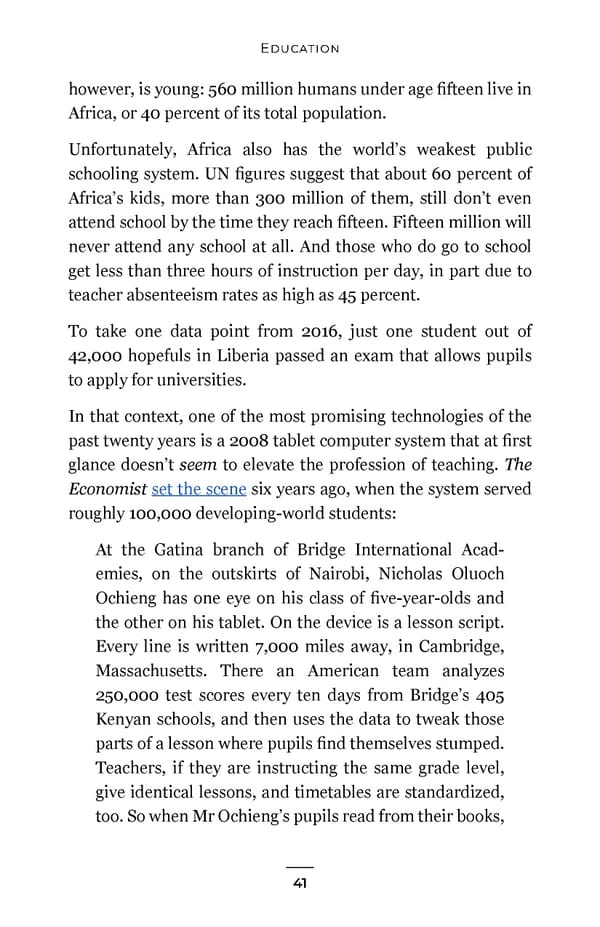Education however, is young: 560 million humans under age fifteen live in Africa, or 40 percent of its total population. Unfortunately, Africa also has the world’s weakest public schooling system. UN figures suggest that about 60 percent of Africa’s kids, more than 300 million of them, still don’t even attend school by the time they reach fifteen. Fifteen million will never attend any school at all. And those who do go to school get less than three hours of instruction per day, in part due to teacher absenteeism rates as high as 45 percent. To take one data point from 2016, just one student out of 42,000 hopefuls in Liberia passed an exam that allows pupils to apply for universities. In that context, one of the most promising technologies of the past twenty years is a 2008 tablet computer system that at first glance doesn’t seem to elevate the profession of teaching. The Economist set the scene six years ago, when the system served roughly 100,000 developing-world students: At the Gatina branch of Bridge International Acad- emies, on the outskirts of Nairobi, Nicholas Oluoch Ochieng has one eye on his class of five-year-olds and the other on his tablet. On the device is a lesson script. Every line is written 7,000 miles away, in Cambridge, Massachusetts. There an American team analyzes 250,000 test scores every ten days from Bridge’s 405 Kenyan schools, and then uses the data to tweak those parts of a lesson where pupils find themselves stumped. Teachers, if they are instructing the same grade level, give identical lessons, and timetables are standardized, too. So when Mr Ochieng’s pupils read from their books, 41
 Impromptu by Reid Hoffman with GPT-4 Page 47 Page 49
Impromptu by Reid Hoffman with GPT-4 Page 47 Page 49